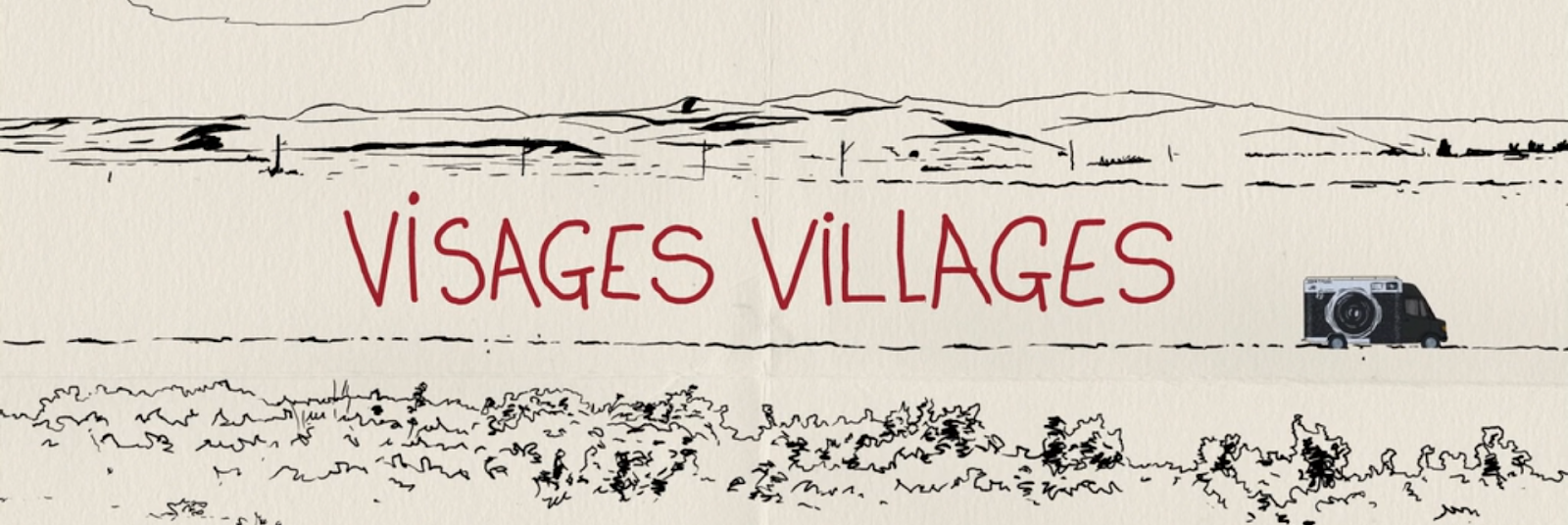Film Review
If it is not the initial soft, non-diegetic sweetness from French composer and musician Matthieu Chedid (stage name “-M-”), trailing his fingers in arpeggios of standard tuning and 12th fret harmonics at the beginning of the film — the vibrant low-framerate animated opening sequence — that draws you straight into the cantabile imagination of French vineyards and provincial farmlands, then this film was clearly not intended for you to see; Seeing, here, is not taken for granted.
Master filmmaker Agnès Varda’s second last work, the film-documentary Visage Villages (2017) (which congruently means Faces Places), was a collaboration with photographer-artist JR before her death in March 2019 (JR might well have been the protégé of the late French photographer Henri Cartier-Bresson, whose gravestone the two artists incidentally visit in the film). Visages Villages is for the detail-oriented, and for those who delight in Andre Bazin’s auteur theory, yet allowing some leeway for those who sneer at it; it is a semi-autobiographical road trip concerning the two artists played by the two artists, with the meta-sensibility and indulgence of a film about making a film. Varda, after all, helped pioneer the French New Wave, along with her contemporaries Jean-Luc Godard and François Truffaut. Yet she and JR offer a fresh direction to filmic staging, in which Visages Villages leaves wonderful ambiguities and raging questions about how we see things in the faces and places of everyday. In the film’s credits, we notice that JR and Varda are both directors and screenwriters, in full control of the film-documentary. Yet JR and Varda’s staging of the film is deceptively organic, in itself affecting what we see and don’t see.

Much of Visages Villages feature JR and Varda touring all of France, pasting giant monochrome portraits of various village peoples over various village walls and even shipping containers, captured and produced by JR’s printer-van, a relic from his internationally-based Inside-Out Project. However, this is essentially a MacGuffin, a major plot device concealing an underlying direction, to expound upon the relationality between the two great artists, tied to the concept of seeing. To that, in a seemingly counterproductive manner, the film begins with how the two did not meet: a wide-angle shot of JR and Varda passing by each other innocuously over a long country road; Varda asking JR to help read bus stop signs as if he were another stranger; JR failing to buy the last two eclairs in a bakery without seeing how Varda had already reserved them. A staging of non-encounter is at play here. But what follows is Varda and JR explaining how they have admired each other’s work despite not having met each other: JR waxing about Cleo’s eyes in Varda’s Cléo de 5 à 7 (1962); Varda saying how much they liked the images of eyes JR pasted on industrial tanks. Varda and JR thus want viewers to consider what it means to view our intersubjective connections with each other: even if we might not view the physical presence of someone, or have known someone by virtue of seeing them in person, we inevitably see traces of each other in the everyday, whether it is in the objects we interact with that get passed on or what we are inspired by.

Under JR and Varda’s direction, Visages Villages interweaves and conceives, much like anaphora used in poetry with constant repetitions and relations across words and phrases, of almost every association and pun related to seeing, to the point it becomes a constant motif in the film. Yet, this diasporic web of meaning delights rather than oversaturates — from the very beginning we take for granted that Varda has deteriorating eyesight, while JR never seems to remove his tinted sunglasses. Aside from the MacGuffin of the two taking portraits of faces in various places, the true underlying plot has always been Varda hoping for JR to remove his sunglasses so that she can see his eyes: her personal friendship with Jean-Luc Godard (who also loved sunglasses) is marked by the pivotal moment when he acceded her request, and she photographs his eyes. Throughout the film, Varda hopes that JR would do the same for her, in light of her failing eyesight. In fact, the MacGuffin plot is motivated by Varda’s desire to make film, while relying on JR’s Inside-Out Project, such that she could continue seeing photographs before she potentially goes blind. JR even accompanies Varda to the eye clinic for an eye injection, after which she references the scene from Luis Buñuel’s Un Chien Andalou (1929) where a razor slits an eye open. This web of references not only highlights the tradition of fascination with sight in filmmaking and photography, but likewise the contradiction in the ubiquity and elusiveness that seeing is, and its heavy reliance on memory and emotion.

Perhaps the most striking scenes are the shots that supposedly enter Varda’s first-person field-of-vision: the bus stop scene is a mere primer towards how Varda is portrayed as one who sees partially in blur; after the clinic scene we see actors holding letters, constructing a large Snellen chart for her viewership; when she fails to meet Godard in the last scene, JR finally removes his sunglasses for her, but we see his blurred face through her eyes. This ultimately begs the most crucial question of the film: how staging affects our seeing of film and photography. No one will ever know if the gaussian blur in these sequences is truly representative of Varda’s first-person perspective. Nor is the mystery of JR’s eyes resolved, as Varda shows us her first-person view of his eyes, marking the end of the film. Varda and JR ultimately teach us that film, like sight, is muddy, imperfect, and non-omniscient — however, therein lies the beauty in staging and perception.
Visages Villages highlights the immense sensitivity by both artists towards visual artistry. This love is conveyed to the audience: we are reminded to not forget the power of sight.
Header, feature, and article images from Visages Villages.
—
About the Author
Lune Loh is a core member of /S@BER, a Singaporean writing collective, and is currently an Undergraduate at the National University of Singapore, residing at Tembusu College. Her works have been published in Cha: An Asian Literary Journal, Cordite Poetry Review, 聲韻詩刊 Voice & Verse Poetry Magazine, Math Paper Press’ SingPoWriMo 2017 & SingPoWriMo 2018, and Squircle Line Press’ Anima Methodi anthology.
She loves eating Fine Foods Mala every Saturday night.





